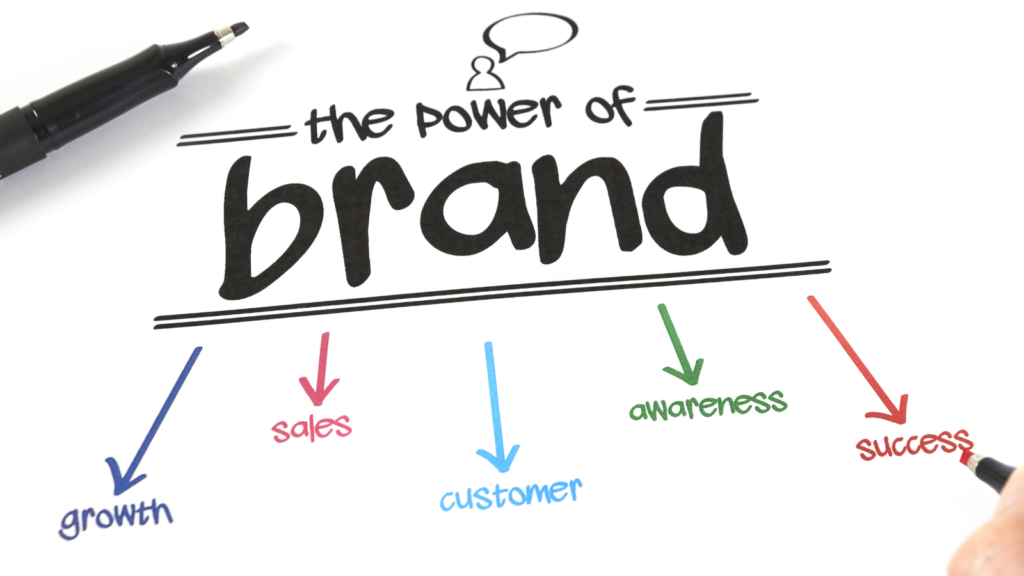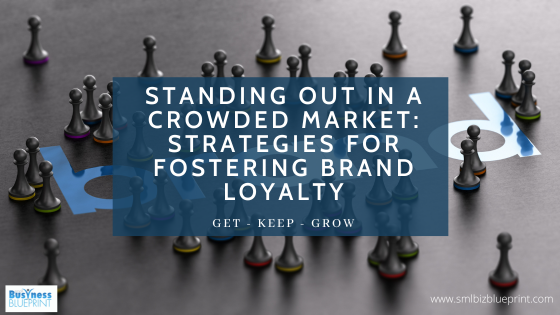In a marketplace saturated with options, small and medium-sized enterprises (SMEs) face the daunting challenge of attracting customers and fostering enduring loyalty.
In an era where customer loyalty is a rare commodity, understanding how to cultivate it can set your SME apart, transforming your clientele into a dedicated community.
The ability to cultivate deep, lasting customer loyalty is what sets successful small businesses apart.
In this in-depth guide, we unravel the strategies that empower your business to stand out and build lasting relationships in a world of endless choices.

1 The Modern Marketplace: Understanding the Abundance of Choices
In today’s marketplace, consumers have an unprecedented array of choices. This abundance, driven by globalisation and the digital revolution, has fundamentally altered how customers interact with brands and make purchasing decisions.
Customers can afford to be selective.
They’re looking for products, services, and solutions that perfectly align with their needs and values. This environment has shifted the power from businesses to consumers, who now dictate what they want, how they want it, and when they want it.
Analysing the Impact on Consumer Behavior:
Today’s consumers expect more than just a good product. They seek exceptional customer service, ethical business practices, and personalised experiences. Businesses that fail to meet these heightened expectations may quickly lose out to competitors who do.
Brand Loyalty Challenges:
With so many options available, consumers are less likely to stay loyal to one brand. They constantly seek something better in price, quality, or service. This makes it essential for businesses to engage and re-engage with their customers to foster loyalty continuously.
The internet has made it easier for consumers to explore their options. They can compare products, read reviews, and seek recommendations on social media.
This level of accessibility means businesses need to be more transparent, authentic, and engaging in their online presence.
Adapting to the Abundance:
Market Research:
Conduct thorough market research to understand what sets your business apart in a crowded market. Identify gaps that your SME can fill.
Competitive Analysis:
Regularly analyse your competitors. Understand their offerings, marketing strategies, and customer feedback. Use this information to refine your unique selling proposition (USP).
Customer-Centric Approach:
Shift your focus to a customer-centric business model. Tailor your products, services, and marketing efforts to meet your target audience’s needs and preferences.
Embrace Technology:
Utilise digital tools to understand better and connect with your customers. Implement systems like CRM and analytics to gather and act on customer data.
The digital age has redefined the landscape of customer loyalty. In this era, customer interactions are no longer confined to physical stores or traditional media. Digital platforms have become the new battleground for customer loyalty, offering both challenges and opportunities for SMEs.
2 Understanding the Digital Shift in Customer Loyalty:
Customers now have instant access to information about products and services. They can easily compare features, prices, and reviews online, making informed decisions without interacting with a salesperson.
This access empowers customers and means businesses must be more transparent and competitive.
Social media platforms have become pivotal in shaping brand perceptions and customer decisions. Positive reviews and shares can significantly boost a brand, while negative experiences can quickly damage a reputation.
Engaging actively and authentically on social media is crucial for building and maintaining customer loyalty.
In the digital age, personalised experiences are not just appreciated but expected. Customers seek offers and communications tailored to their interests and behaviours.
Personalisation can significantly enhance customer loyalty by making customers feel valued and understood.
Strategies for Cultivating Digital Loyalty:
Leverage Data Analytics:
Use customer data to gain insights into preferences and behaviours. This information can guide personalised marketing campaigns and product development.
Engage and Respond on Social Media:
Establish a strong social media presence. Engage with customers, respond to their inquiries promptly, and create content that resonates with your audience.
Create Omnichannel Experiences:
Ensure a seamless customer experience across all digital channels – from your website to social media to email campaigns. Consistency across channels reinforces brand reliability and trust.
Reward Loyalty:
Implement digital loyalty programs that reward customers for repeat purchases, referrals, or social media engagement. Such programs can enhance customer retention and encourage brand advocacy.

3 Crafting a Unique Value Proposition
Your Unique Value Proposition (UVP) makes you stand out in a market overflowing with options. It’s the compelling reason customers choose you over competitors.
A well-defined UVP attracts attention and fosters loyalty by aligning your offerings with customers’ needs and desires.
Developing Your UVP:
Identify Your Strengths:
Begin by analysing what your business does best. Is it exceptional customer service, innovative product features, or unmatched expertise in your field? Understanding your strengths is the first step in defining your UVP.
Understand Your Customer:
Know your target audience deeply. What are their pain points? What solutions are they seeking? Use customer feedback, market research, and data analysis to gather this information.
Communicate Clearly:
Once you have identified your UVP, articulate it clearly in all your communications. Whether on your website, social media, or in advertisements, ensure your message is consistent and resonates with your audience.
Consider a small tech company that specialises in eco-friendly gadgets. Their UVP might be “Innovative Tech for a Greener Tomorrow.” This message appeals to environmentally conscious consumers looking for the latest technology but wants to make sustainable choices.
Action Steps:
Conduct a SWOT analysis to understand your business’s strengths and how they align with market needs.
Engage with your customers through surveys or focus groups to gain insights into their preferences and expectations.
Craft a clear, concise UVP statement and integrate it into all your marketing materials.
Creating Your Brand’s Identity:
Your UVP distinguishes your SME in a crowded marketplace. It’s the compelling reason why customers should choose you over others.
How to Develop Your UVP:
Reflect on what makes your business unique: product quality, customer service, innovation, or ethical practices.
Communicate this unique offering clearly and consistently across all your marketing channels.
Your Secret Weapon:
A Unique Value Proposition (UVP) is your clarion call to customers, telling them why they should choose you over a sea of competitors.
Crafting Your UVP:
Focus on what makes your business unique. Is it your customer service, innovative product features, or a sustainability commitment? Highlight these elements in all your communications.
In the relentless tide of market competition, your Unique Value Proposition (UVP) is the beacon that guides customers to your shores. It’s what sets you apart, what makes your offering not just different but uniquely suited to your customers’ needs.
4 Elevating Customer Experience
In the current business climate, where products and services are increasingly commoditised, the customer experience (CX) you deliver is what can truly set your SME apart.
Elevating the customer experience is about creating positive, memorable interactions at every touchpoint with your brand.
In a world where customers are bombarded with choices, a superior customer experience can be the deciding factor that tips the scales in your favour.
Exceptional experiences build emotional connections with customers, leading to higher loyalty and advocacy.
Positive customer experiences often translate into word-of-mouth recommendations, one of the most effective and low-cost marketing strategies.
Creating Outstanding Customer Experiences:
Understand Your Customer Journey:
Map out the customer journey to understand all the potential touchpoints where customers interact with your brand. Identify areas for improvement at each stage.
Personalize Interactions:
Use customer data to provide personalised experiences. Tailoring communication and offerings based on customer preferences and behaviours can significantly enhance satisfaction.
Invest in Customer Service:
Ensure your customer service team is well-trained, empathetic, and empowered to solve customer issues effectively. Quick and efficient resolution of problems can turn a negative experience into a positive one.
Gather and Act on Feedback:
Regularly collect customer feedback through surveys, social media, and other channels. More importantly, act on this feedback to make continuous improvements.
Examples of Elevating CX:
Loyalty Programs Tailored to Customer Preferences:
For instance, a retail SME could offer personalised discounts or rewards based on the customer’s purchase history.
Seamless Omnichannel Experience:
Ensure that whether a customer interacts with your business online, in-store, or over the phone, the experience is consistently positive and cohesive.
Surprise and Delight Tactics:
Small gestures like a thank-you note, a birthday discount, or a free upgrade can significantly enhance the customer experience and foster loyalty.
5 Effective Marketing in a Saturated Market
In a marketplace teeming with options and competitors, effective marketing is not just about reaching your audience; it’s about resonating meaningfully and meaningfully.
This requires a strategic, focused approach, especially in an environment where consumer attention is scarce.
Recognise that your target audience is constantly bombarded with marketing messages. Cutting through this noise requires clarity, creativity, and relevance.
Generic messages are less likely to make an impact. Segment your audience and tailor your messaging to speak directly to each group’s needs and interests.
.
Focus on creating and communicating value. It’s not just about the features of your product or service but how it solves problems or improves the customer’s life.
Strategies for Effective Marketing in Today’s Market:
Content Marketing:
Develop a robust content marketing strategy that positions your brand as a thought leader. This can include informative blog posts, engaging videos, insightful podcasts, and more. The goal is to provide value beyond your product or service.
Utilise Social Media Wisely:
Social media is a powerful tool for engaging directly with your audience. Use it to create a community around your brand, not just as a platform for promotion.
Leverage Customer Testimonials and Stories:
Real stories from satisfied customers can be incredibly persuasive. They add credibility and create an emotional connection with potential customers.
Invest in SEO and SEM:
Ensure your business is easily found online. An investment in Search Engine Optimization (SEO) and Search Engine Marketing (SEM) can increase your visibility in search engine results, making it easier for potential customers to find you.
Innovative Marketing Tactics:
Interactive Marketing:
Engage your audience with interactive content like quizzes, polls, or contests on social media or your website.
Partnerships and Collaborations:
Collaborate with complementary businesses or influencers to expand your reach and tap into new customer bases.
Localised Marketing:
Targeted local marketing strategies, such as local SEO or community events, can be highly effective for businesses with a local focus.

6 Building Long-term Customer Relationships
In the context of abundant market choices, building and maintaining long-term customer relationships distinguishes thriving SMEs from those that merely survive.
This journey goes beyond the initial sale; it involves nurturing a continuous, mutually beneficial relationship with your customers.
Long-term relationships lead to increased customer lifetime value. Repeat customers spend more over time and are likelier to try your new offerings.
Loyal customers often become brand advocates, recommending your products or services to others, which is invaluable for organic growth.
Established relationships provide a steady stream of feedback, allowing you to continuously refine and improve your offerings.
Strategies for Nurturing Customer Relationships:
Consistent Communication:
Keep in touch with your customers through regular newsletters, updates, and personalised messages. This consistent communication keeps your brand top-of-mind and shows customers you value their business.
Customer Engagement Programs:
Implement loyalty programs, customer appreciation events, or exclusive offers for returning customers. Such initiatives reward loyalty and deepen the customers’ emotional connection to your brand.
Listen and Respond to Customer Needs:
Actively seek customer feedback through surveys, social media, and direct communication. More importantly, demonstrate your listening by making changes based on their input.
Personalised Experiences:
Use customer data to provide personalised experiences. Tailoring your service or product recommendations based on their past purchases or preferences can significantly enhance customer satisfaction.
Examples of Relationship Building:
Community Building Initiatives:
Engage customers through community forums, user groups, or social media platforms where they can connect with your brand.
Customer Success Stories:
Share stories of how your products or services have positively impacted customers. This celebrates your customers and shows potential customers the value you provide.
Responsive Customer Service:
Ensure your customer service is not only efficient but also empathetic. A customer service team that goes above and beyond can turn a one-time buyer into a lifelong customer.
7 Leveraging Technology for Customer Engagement
In the digital era, technology is not just an operational tool; it’s a critical component in engaging and understanding your customers. For SMEs, effectively leveraging technology can revolutionise how you interact with your audience, enhance customer experiences, and build stronger relationships.
Technology enables businesses to collect and analyse customer preferences, behaviours, and feedback data. These insights are invaluable for personalising customer experiences and making informed business decisions.
Automation tools can streamline repetitive tasks such as email marketing, customer inquiries, and data management, allowing you to focus on more strategic aspects of customer engagement.
Technologies like CRM systems help businesses maintain a consistent presence across various channels (social media, email, website), ensuring a seamless customer journey.
Implementing Technology Effectively:
Customer Relationship Management (CRM) Tools:
Invest in a robust CRM system to manage customer interactions, track sales, and store important customer information. This can lead to more personalised and timely interactions.
Social Media Tools:
Use social media management tools to schedule posts, engage with your audience, and analyse social media performance. This helps in maintaining an active and responsive online presence.
Chatbots and AI:
Implement AI-driven tools like chatbots for instant customer service. Chatbots can handle basic inquiries 24/7, improving customer support and freeing up your team for more complex issues.
Email Marketing Software:
Utilize email marketing tools to automate campaigns, segment audiences, and track engagement. This allows for more targeted and effective communication strategies.
Interactive Apps:
Develop interactive mobile apps that offer convenience and added value to customers, such as easy ordering, loyalty rewards, or exclusive content.
Feedback and Survey Tools:
Use online survey tools to gather customer feedback regularly. This provides valuable insights and shows customers you value and act on their opinions.

8 Adapting to Market Changes and Customer Feedback
In a rapidly evolving business environment, the ability to adapt quickly to market changes and customer feedback is a critical success factor for SMEs. Staying agile ensures your business remains relevant and competitive while deepening customer trust by showing that you value and respond to their input.
Understanding the Dynamics of Market Change:
Consumer trends and preferences can shift rapidly. Keeping a close eye on these changes helps you to stay ahead and adapt your offerings accordingly.
Technological innovations can change market landscapes overnight. Embracing new technologies can provide a competitive edge and enhance customer experiences.
The actions of your competitors can significantly impact your market position. Regular analysis helps you to adapt your strategies to stay competitive.
Integrating Customer Feedback into Business Strategy:
Active Listening and Engagement:
Establish channels for continuous customer feedback, such as surveys, social media, and direct communication. Actively listen and engage with your customers to understand their needs and concerns.
Rapid Implementation of Feedback:
Develop a system for quickly implementing customer feedback into your products or services. This responsiveness can significantly enhance customer satisfaction and loyalty.
Iterative Approach:
Adopt an iterative approach to business development. This means regularly reviewing and refining your offerings based on customer feedback and market research.
Strategies for Staying Agile in a Changing Market:
Flexibility in Business Planning:
Build flexibility into your business plans and strategies. This allows you to pivot more easily in response to market changes or customer feedback.
Invest in Continuous Learning:
Encourage a culture of continuous learning and improvement within your organisation. Stay updated with industry trends, customer behaviour, and best practices.
Collaborative Ecosystems:
Foster relationships with suppliers, distributors, and other business partners. A collaborative ecosystem can provide valuable insights and help you adapt to changes more effectively.
Service Model Innovation:
A service-based SME that shifts its delivery model to better suit customer preferences, like moving from in-person consultations to online platforms.
Top Priorities:
Craft and Communicate a Compelling Unique Value Proposition (UVP):
Define what makes your business unique and communicate this clearly in all your marketing and customer interactions. This differentiation is vital in a crowded market and helps attract and retain customers who resonate with your brand’s unique offering.
Prioritise and Enhance Customer Experience:
Focus on creating a superior customer experience at every touchpoint. This includes personalised service, responsive support, and engaging interactions. Prioritising customer experience fosters loyalty and turns customers into brand advocates.
Leverage Data-Driven Insights for Targeted Marketing:
Utilise customer data to understand preferences and behaviours, allowing for more personalised and effective marketing campaigns. Implementing targeted marketing strategies based on data-driven insights can significantly improve customer engagement and retention rates.
Unique Enhancements
Embracing Community Engagement and Social Responsibility:
Beyond traditional marketing and customer service, involving your business in community engagement and social responsibility initiatives can create a profound connection with customers. This could involve sponsoring local events, participating in community service, or adopting sustainable practices. These efforts can resonate deeply with customers who value corporate responsibility and community involvement, fostering a stronger emotional bond with your brand.
Using Gamification Techniques in Customer Interactions:
Implementing gamification in your marketing and customer engagement strategies can uniquely increase customer involvement and loyalty. This can include loyalty programs with point systems, challenges, or badges for achieving certain milestones with your business. Gamification adds an element of fun and competition, making interactions with your brand more engaging and memorable.
Leveraging Customer Co-Creation Opportunities:
Involve customers directly in the creation or improvement of products and services. This can be done through idea submission contests, customer feedback panels, or beta testing groups. Allowing customers to contribute to your business’s offerings can increase their investment and loyalty to your brand. It also provides invaluable insights into customer needs and preferences.
Building customer loyalty in a world filled with choices is challenging but achievable. Your SME can survive and thrive by understanding your market, crafting a compelling UVP, elevating customer experiences, and engaging with targeted marketing.
The journey to mastering customer loyalty in a world of endless choices is ongoing and dynamic. By understanding your market, articulating a clear UVP, enhancing customer experience, utilising targeted marketing, and leveraging technology, your SME can build lasting relationships that transcend the transactional nature of business.
FAQs
Q1: How can SMEs stand out in a crowded market?
A1: SMEs can stand out in a crowded market by:
Developing a Unique Value Proposition (UVP): Offer something unique that differentiates your business from competitors, whether a product, service, customer experience, or brand story.
Focusing on Niche Markets: Specialize in a specific area or cater to a particular demographic to establish yourself as an expert in that niche.
Building Strong Relationships: Provide personalised experiences and exceptional service to create deeper customer connections.
Leveraging Content Marketing: Use informative and engaging content to demonstrate expertise and value.
Innovative Use of Technology: Utilize technology to improve customer experiences, streamline operations, and enhance marketing efforts.
Q2: What makes a strong Unique Value Proposition?
A2: A strong UVP:
Clearly Articulates Benefits: Clearly explains how your product or service solves customers’ problems or improves their situation.
Is Specific and Concise: Avoids generic statements and gets to the point quickly.
Focuses on Unique Differentiators: Highlights what sets your offering apart from competitors.
Resonates with Target Audience: Aligns with your target customers’ needs, wants, and values.
Is Credible and Provable: Backed by evidence, testimonials, or guarantees.
Q3: Why is customer experience more important than ever?
A3: Increased Competition: With more choices available, customers can easily switch to competitors if dissatisfied.
Higher Customer Expectations: Customers expect personalised, convenient, and seamless experiences.
Impact on Brand Perception: Positive experiences lead to word-of-mouth referrals and online reviews, significantly influencing buying decisions.
Customer Retention: Good customer experience leads to higher loyalty, reducing churn and increasing lifetime value.
Q4: How can targeted marketing increase customer loyalty?
A4: Personalisation: Tailored marketing makes customers feel recognised and valued, enhancing their connection with the brand.
Relevance: Targeting specific segments makes marketing messages more relevant, addressing individual needs and interests.
Building Trust: Consistent and relevant communication builds trust, an essential loyalty component.
Engagement: Targeted marketing involves two-way interaction, fostering community and belonging among customers.
Q5: What role does technology play in understanding customer preferences?
A5: Data Collection and Analysis: Technology enables businesses to collect and analyse large amounts of customer data, revealing patterns and preferences.
Enhanced Customer Insights: Tools like CRM systems and analytics software provide deeper insights into customer behaviour and preferences.
Personalisation Tools: AI and machine learning can personalise customer interactions and recommendations, improving the overall experience.
Feedback Mechanisms: Digital platforms provide various ways for customers to give feedback, helping businesses to understand and respond to their needs.




